The Oude Kerk (Old Church), Delft. [Wikipedia]: The five characteristic spires of the Oude Kerk (Old Church) tower above the old city centre of Delft. It is the oldest parish church in the city and was originally known as the St Hippolyte Church. The sagging tower of the Oude Kerk is no longer the highest in the city. Nevertheless, it is still as strikingly beautiful as it was during the Middle Ages. The solid presence of the church and tower reaffirms Delft's lasting position in history.
The year 1246 is given as the church's official date of birth, but in fact its history goes back much further. Hundreds of years before count William II enfranchised the city, the inhabitants of the settlement along ‘de Delf’ held church services on the same spot. It is generally assumed that there had been a wooden church on this site as early as 1050.





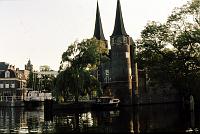
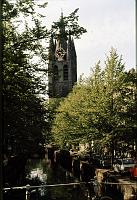
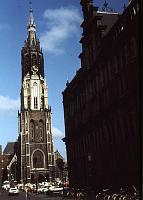
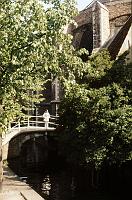
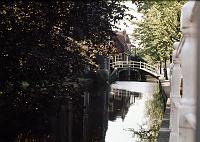
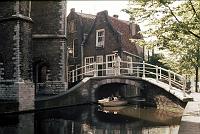
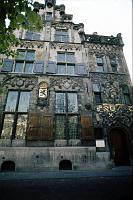
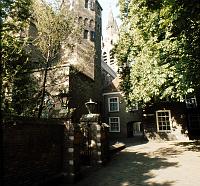
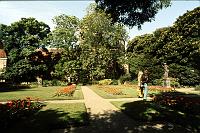
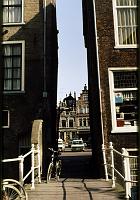

![Old_Church_leaning_tower The Oude Kerk (Old Church), Delft. [Wikipedia]: The five characteristic spires of the Oude Kerk (Old Church) tower above the old city centre of Delft. It is the oldest parish church in the city and was originally known as the St Hippolyte Church. The sagging tower of the Oude Kerk is no longer the highest in the city. Nevertheless, it is still as strikingly beautiful as it was during the Middle Ages. The solid presence of the church and tower reaffirms Delft's lasting position in history.
The year 1246 is given as the church's official date of birth, but in fact its history goes back much further. Hundreds of years before count William II enfranchised the city, the inhabitants of the settlement along ‘de Delf’ held church services on the same spot. It is generally assumed that there had been a wooden church on this site as early as 1050. Old_Church_leaning_tower The Oude Kerk (Old Church), Delft. [Wikipedia]: The five characteristic spires of the Oude Kerk (Old Church) tower above the old city centre of Delft. It is the oldest parish church in the city and was originally known as the St Hippolyte Church. The sagging tower of the Oude Kerk is no longer the highest in the city. Nevertheless, it is still as strikingly beautiful as it was during the Middle Ages. The solid presence of the church and tower reaffirms Delft's lasting position in history.
The year 1246 is given as the church's official date of birth, but in fact its history goes back much further. Hundreds of years before count William II enfranchised the city, the inhabitants of the settlement along ‘de Delf’ held church services on the same spot. It is generally assumed that there had been a wooden church on this site as early as 1050.](Old_Church_leaning_tower.jpg)